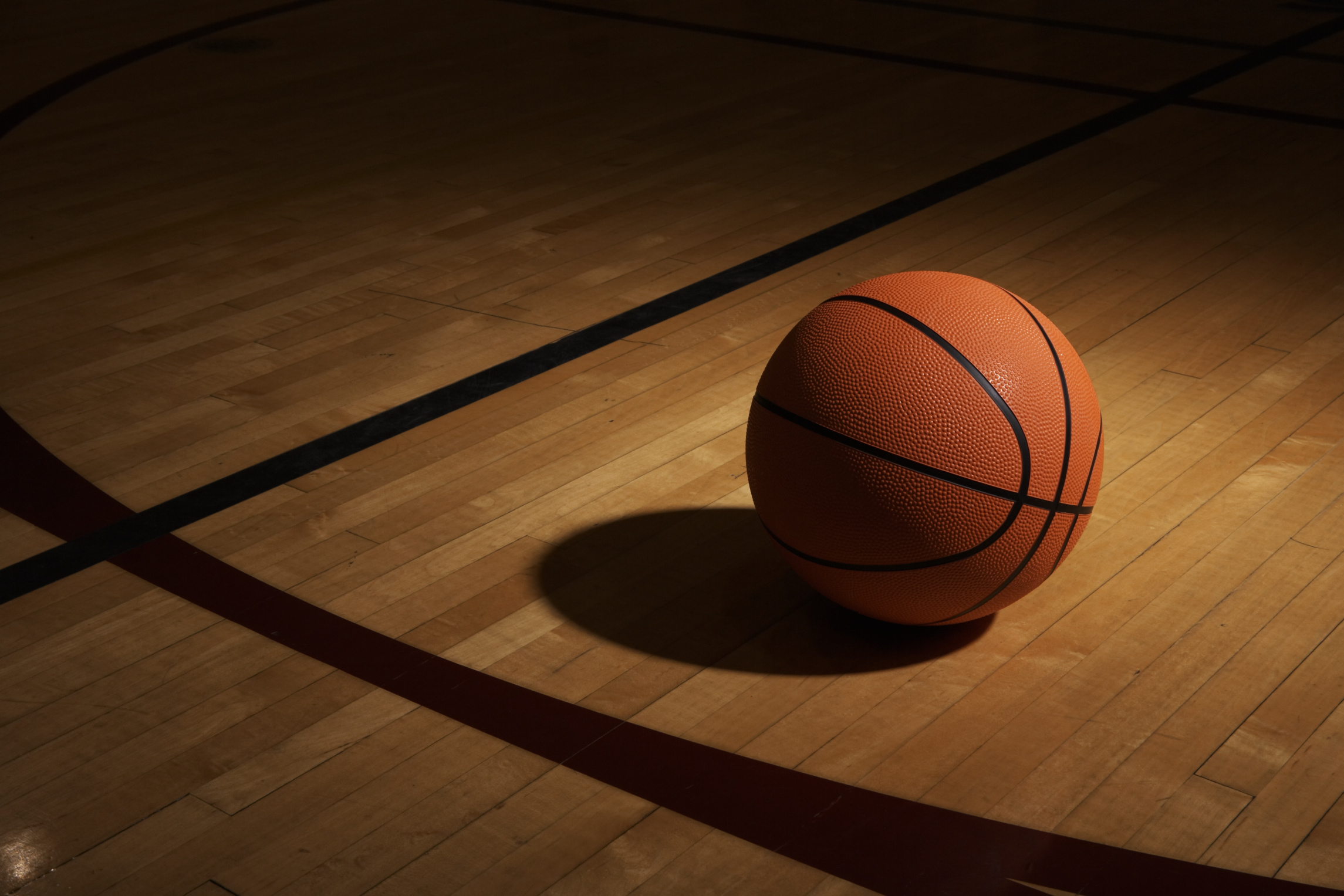When you’re looking to build a basketball court for your own practice and recreation, you’ll want to consider the equipment that the basketball court will have in order to maintain its professionalism. For example, the type of basketball, basketball uniforms, hoops, knee pads, etc., but you should also focus on the basketball surface you are using. It will completely affect your basketball court’s ball rebound rate, ball rebound direction, anti-skid coefficient, etc., which will have a great impact on your sports experience and professional training.
But how to choose the best basketball court floor in 2024 ? Let’s first understand the types of basketball court flooring that exist in the market.
Types and characteristics of basketball court floor
Hardwood floor
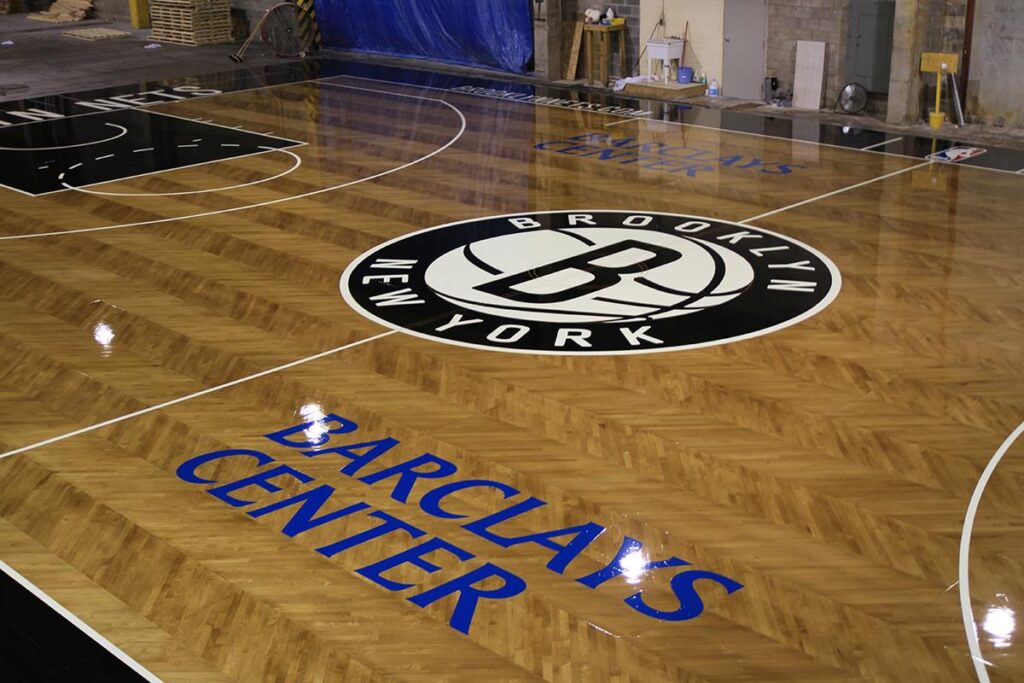
Hardwood flooring is mainly used in the construction of indoor basketball courts. It has been used by NBA leagues for its excellent bounce and shock absorption. The most commonly used hardwood floors are maple basketball courts, whose hard surface can withstand the constant impact of a basketball game and provide predictable ball rebound. But the hardwood floor of the basketball court is a three-layer structure, and it can also have a good impact absorption capacity. It not only ensures the rebound of the ball, but also has good shock absorption. Plus, hardwood flooring colors are a favorite of many, and they also provide a pleasing contrast to the lines and markings on the court, helping to improve visibility. However, unfortunately, hardwood flooring is not suitable for the construction of outdoor basketball courts. It is not anti-corrosion and is easily corroded by rain.
Acrylic floor
Acrylic flooring can be used in the construction of outdoor basketball courts and has certain durability. But it is made by layers of liquid materials. So, the basketball bounces well on it, but it lacks the ability to wash off and absorb. And after a long period of use, the surface of the acrylic basketball court will be sunken and it will take time and cost to maintain it.
Synthetic flooring: modular sport tiles
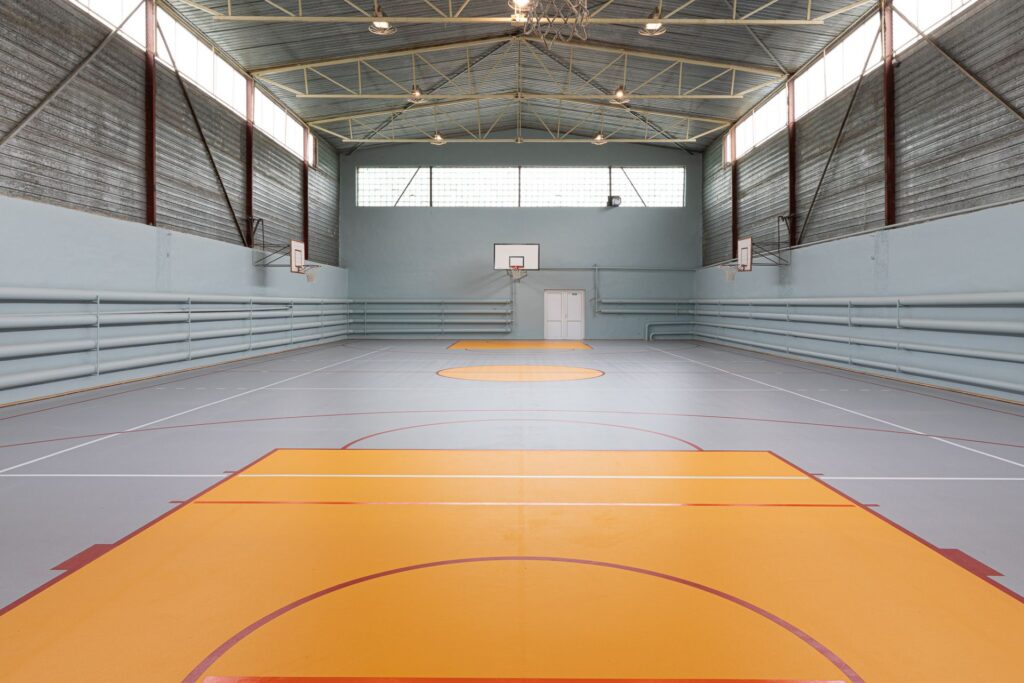
Synthetic flooring has become the most popular surface material for basketball courts because of its high durability, ease of installation, and DIY features. This floor is made of polypropylene material, which is recyclable and environmentally friendly. Additionally, as basketball court floors, they provide excellent shock absorption, reducing player fatigue, and can mimic the feel and performance of hardwood floors. Therefore, they are loved by many basketball court builders. If you want to know more about basketball court sport tiles, you can check it here: Outdoor Basketball Court Tiles | FIBA Standard | ZSFloor.
Things to Consider When Buying a Basketball Floor
When shopping for basketball court flooring, consider the following factors:
Purpose: Determine whether the court will be used indoors or outdoors, as this directly affects the type of flooring required. Hardwoods are ideal for indoor courts, while acrylic or modular sport tiles are better for outdoor basketball court construction.
Budget: While hardwood may offer an unrivaled experience, it can be prohibitively expensive and requires significant installation and maintenance costs. But modular basketball tiles and acrylic floors are more economical and affordable options.
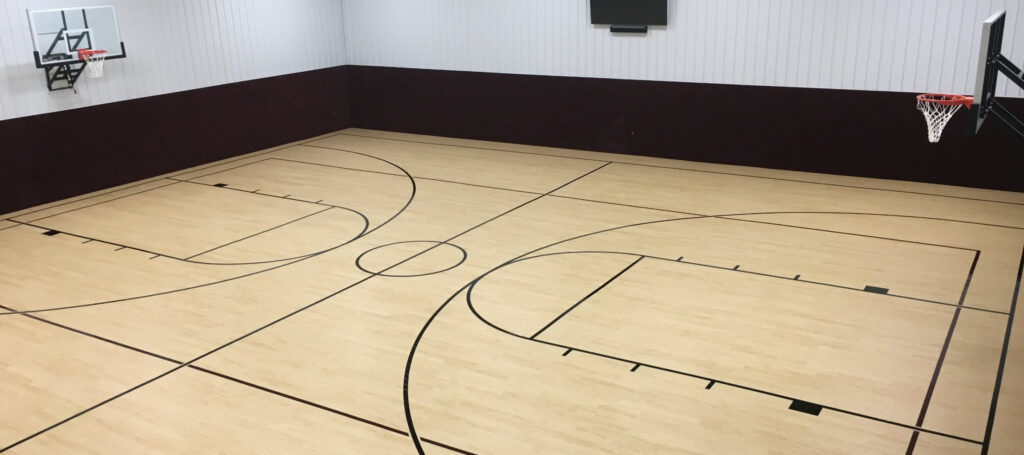
Maintenance: Know the maintenance required for each type of flooring. Hardwood floors require regular resurfacing and are more expensive to maintain than acrylic floors. Acrylic basketball courts also need manual maintenance or resurfacing after a few years of use, which will be a big expense. But the exciting thing is that modular basketball tiles are usually maintenance-free, once installed and can be used forever, you only need to clean the dust layer and fallen leaves on it.
Safety: The primary consideration when purchasing basketball court flooring is the safety of the court. We know that basketball courts with hard surfaces such as concrete do not have the ability to absorb shocks, which will cause serious damage to athletes’ joints under long-term use and is irreversible. Therefore, before buying, you should know whether the floor can provide good traction to prevent players from being injured. In addition, find out how much their shock absorption capacity is, whether they can meet the requirements of FIBA, and reduce the impact on the players’ joints.
Installation: Consider the convenience of installation. Hardwood floor installation is labor intensive and you need to find a professional wood floor installer to come and install it. Acrylic basketball courts require professional construction workers to help you level the surface. However, modular basketball tiles are completely self-installable, the floor is linked by snaps and no tools are required, you can complete the installation of the basketball court with your family according to the drawings and save construction costs!
Frequently Asked Questions About Basketball Flooring
Q: How often should basketball court floors be replaced?
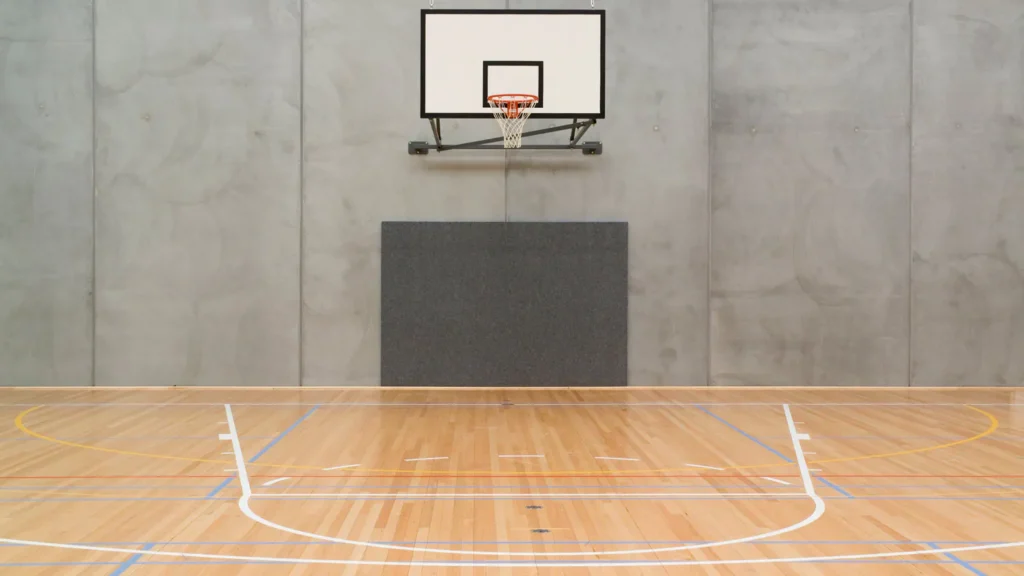
A: If hardwood floors are cared for properly, they may need to be resurfaced every 7-10 years. Polypropylene basketball floors usually have a warranty of more than 10 years and a service life of more than 15 years.
Q: Can basketball court floors be recycled?
A: Yes, modular basketball tiles are 100% recyclable, making them an environmentally friendly choice. After recycling, it can be used to make other plastic products. However, hardwood floors are generally not recyclable.
Q: What affects the bounce of the basketball on different floors?
A: The material and underlayment of the floor can significantly affect the bounce of the basketball. Hardwood floors are known for their excellent bounce properties, and synthetic floors are designed to mimic that bounce. The hardness and flatness of the surface also play a role in controlling the bounce of the ball.
How to clean modular basketball court floor
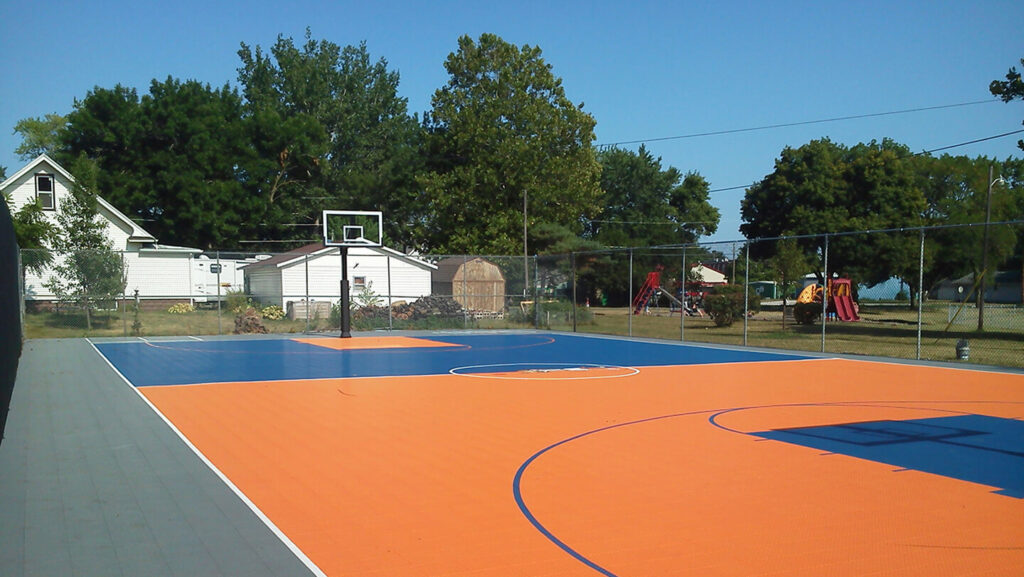
Modular basketball court tiles are a great flooring choice for basketball players, even though they are maintenance-free but basketball courts located in the backyard will need regular cleaning to keep you looking good and looking professional.
You can follow these steps to clean up your basketball court:
- Debris removal: Sweep the court with a wide, soft bristled broom to remove any loose debris such as dust, leaves and other outdoor material. You can also use a vacuum to remove smaller particles quickly and efficiently.
- Spot Cleaning: If there are any stains or marks on the site, use a damp cloth or mop to spot clean the area. Your caveat is to avoid harsh or abrasive cleaning products as they can damage the tile surface.
- Mopping: After cleaning any problem areas, you can continue mopping with a pH-neutral cleaner. Add the cleaner to a bucket of warm water, then use a clean mop or microfiber pad to gently wipe the surface without applying too much pressure.
- Rinse: After mopping the entire course, you should rinse the surface with a clean mop or fresh water to ensure you have removed any remaining dirt or cleaning fluid.
- Dry the surface: Because the floor drains well, you just need to wait for it to dry on its own before playing basketball.
Whether you’re planning a professional-grade indoor court or a backyard practice space, taking the time to understand the characteristics of each floor will ensure you make the right choice.

